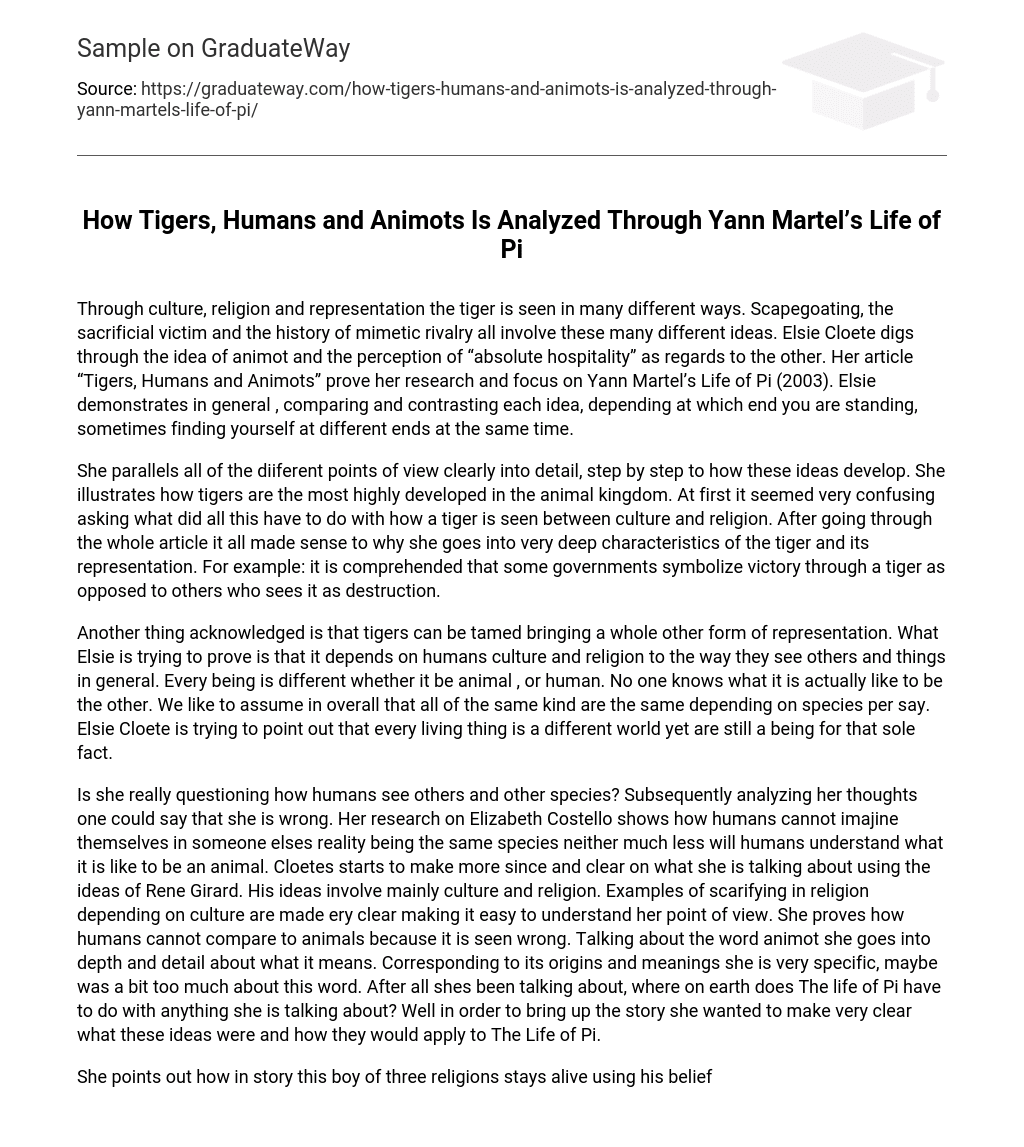In the article “Tigers, Humans and Animots,” Elsie Cloete explores various perspectives on the tiger through culture, religion, and representation. The concepts of scapegoating, the sacrificial victim, and mimetic rivalry are all intertwined with these different interpretations. Cloete references Yann Martel’s novel Life of Pi (2003) to support her research on the idea of animot and the concept of “absolute hospitality” towards the other. Throughout her analysis, Cloete highlights the contrasting viewpoints and the possibility of finding oneself on different ends of the spectrum simultaneously.
The author provides a clear and detailed explanation of how different points of view regarding tigers develop. The author emphasizes that tigers are the most highly developed animals in the animal kingdom. Initially, it may seem confusing to understand the connection between the discussion of tigers and their portrayal in culture and religion. However, after reading the entire article, it becomes clear why the author extensively explores the characteristics and representations of tigers. For instance, the author highlights how certain governments associate tigers with victory, while others perceive them as symbols of destruction.
The text highlights the distinct viewpoint of domesticating tigers, with Elsie emphasizing how culture and religion influence our understanding of others and the world. Both animals and humans are unique in their own ways, making it impossible for us to fully grasp someone else’s experience. Despite assuming similarities among individuals within a species, Elsie Cloete underscores that each living being is its own separate universe, despite sharing existence.
The author is questioning how humans perceive others, including other species. In her analysis of Elizabeth Costello, she argues that humans cannot fully imagine themselves in the reality of someone from the same species, let alone understand what it is like to be an animal. She references the ideas of Rene Girard, who explores the concepts of culture and religion. Through examples of religious sacrifices across different cultures, she illustrates her point that humans cannot compare themselves to animals. Additionally, she delves into the word “animot,” providing specific details about its origins and meanings, perhaps going into too much depth. Finally, she brings up The Life of Pi to further clarify her ideas and how they relate to the story.
The author highlights how the protagonist of the story, who follows three different religions, manages to survive by holding onto his beliefs. She effectively explains how our understanding of each other is influenced by animal culture and religion, as depicted in the book. By using analogies from the story, she enhances our comprehension of her theory. Through examples from the story, she defines both the tiger (Richard Parker) and Pi. Additionally, she emphasizes that humans tend to avoid facing reality and instead prefer to deceive themselves. Elsie demonstrates how humans can display animalistic traits when faced with adversity, similar to Pi’s situation in the book.
The illustration provided by Elsie Cloete is without a doubt convincing. While there are numerous points I find myself in agreement with, certain aspects remain somewhat difficult to connect with completely. This may be because at times, we need to personally experience a given situation in order to truly comprehend our own beliefs. Additionally, it prompts us to question whether we are truly distinct from animals. I wholeheartedly concur that both culture and religion influence our perception of what we consider to be reality, yet are ultimately confronted with the actual truth.





